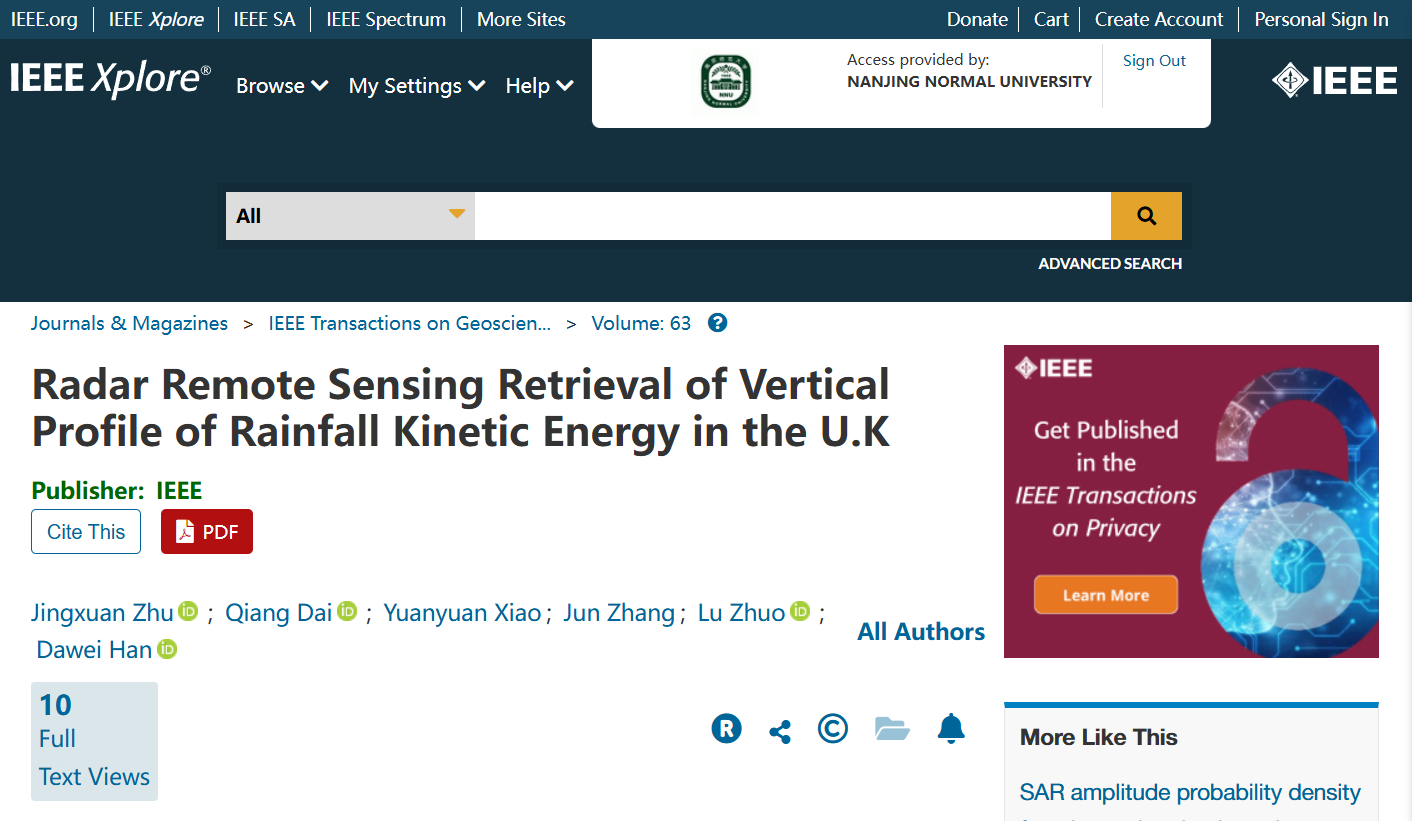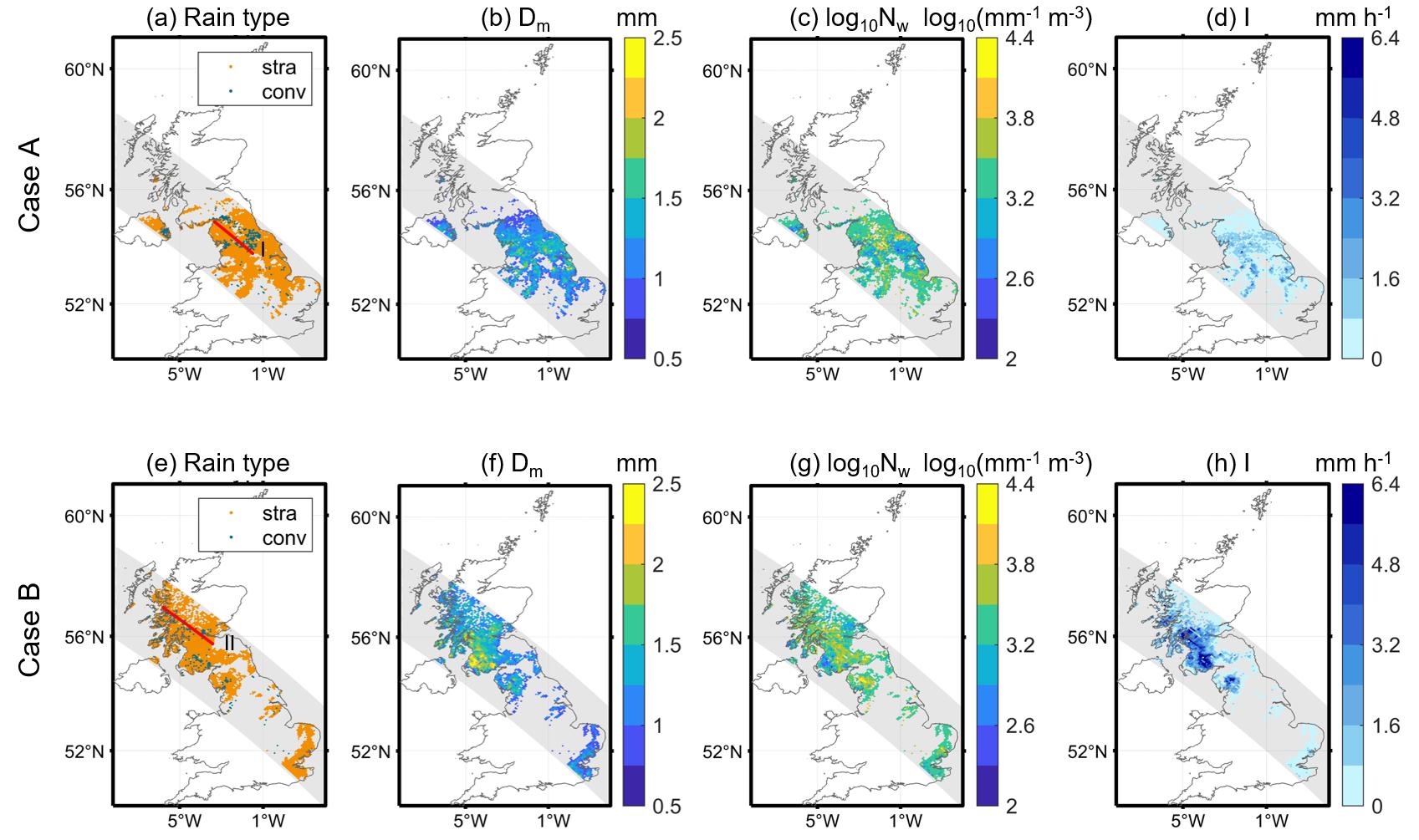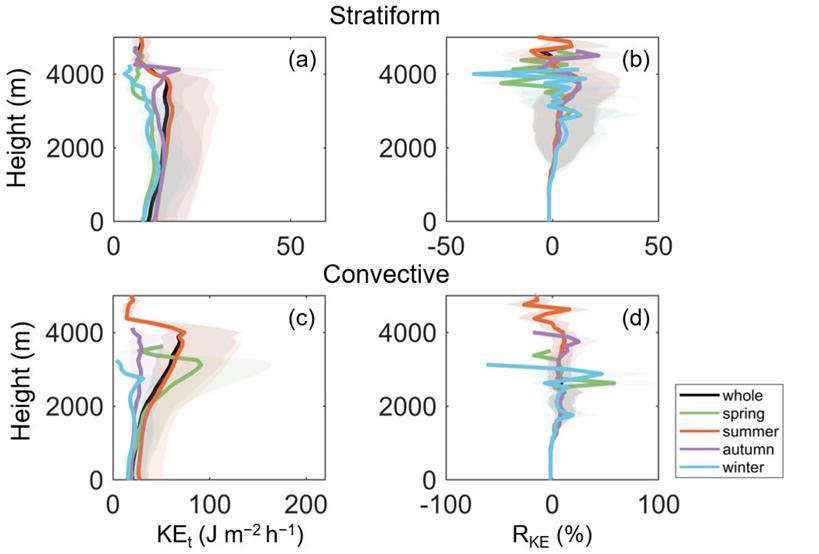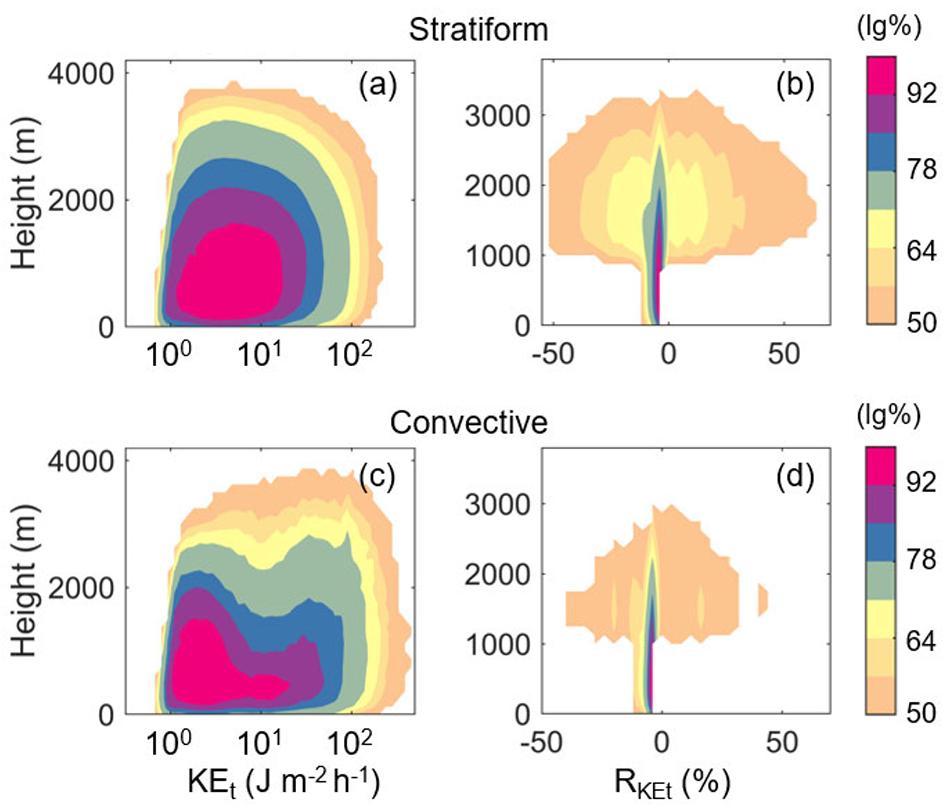The group has made research progress in the direction of three-dimensional rainfall energy:

Rainfall, as a key link in the water cycle, has a profound impact on ecosystems, agricultural production and human habitats. Traditional studies have focused on the vertical changes in rainfall intensity and raindrop size distribution, while the important microscopic feature of rainfall energy is often neglected. Rainfall energy, i.e., the kinetic energy converted from gravitational potential energy when raindrops fall to the ground, not only affects the structure of soil aggregates, but is also a key factor driving soil erosion. However, due to the limitation of observation technology, the three-dimensional spatial variation of rainfall energy has not been fully revealed, which restricts our comprehensive knowledge of the rainfall process and the realization of accurate estimation of rainfall energy. To address this issue, Dr. Jingxuan Zhu of the team published a research result titled “Radar Remote Sensing Retrieval of Vertical Profile of Rainfall Kinetic Energy in the U.K” in February 2025 in the IEEE Transactions on Geoscience and Remote Sensing.
In this study, we make innovative use of the dual-frequency precipitation radar (DPR) data from the Global Precipitation Measurement (GPM) program to investigate the vertical distribution of rainfall energy (KEt) in the U.K. The GPM DPR, as an advanced satellite-borne radar, has the advantage of operating in the dual frequency bands of Ku (13.6 GHz) and Ka (35.5 GHz), and its widths of 245 and 120 km, ground resolution of 5 km, and vertical resolution of 125 m allow it to penetrate clouds to obtain detailed information on precipitation particles from cloud tops to ground level, providing unprecedentedly fine data support for studying the vertical variation of rainfall energy. Its 245 km and 120 km bandwidths, 5 km ground resolution and 125 m vertical resolution allow it to penetrate clouds and obtain detailed information on precipitation particles from cloud tops to the ground, providing unprecedentedly fine data to study the vertical variation of rainfall energy. The study area covers the whole of the UK, which has a temperate maritime climate characterized by frequent and abundant annual rainfall, providing a good data base for studying the spatial and temporal variations of rainfall energy.

It was found that rainfall energy in the UK showed a significant distribution pattern in the vertical direction. Below 1500 m, the rainfall energy correlation between adjacent 125 m height layers was extremely strong with a correlation coefficient of more than 0.99, with the correlation for laminar rain (0.9973) being higher than that for convective rain (0.9957), suggesting that the KEt change for convective rain is more complex. Below 1500 m, the standard deviation of the rate of change of KEt (RKEt) was as high as 12.08% and 28.37% for stratiform and convective rain, respectively, showing significant variations of rainfall energy among different altitude layers. Further analysis reveals that the rainfall energy is characterized by obvious seasonal variations, with the KEt reaching the highest value at all height layers in summer and the lowest in winter. This seasonal difference is more significant at high altitudes, reflecting the differences in the microphysical processes of raindrops in different seasons.

The study also revealed a strong link between rainfall energy and rainfall type. Convective rain usually has larger droplet sizes and higher intensities at low altitudes, while stratiform rain exhibits more homogeneous microphysical characteristics. Below 1500 m, although the mean RKEt of stratiform rain (1.36%) is higher than that of convective rain (0.64%), its standard deviation is larger, indicating that stratiform rain is more intense at low altitudes. In contrast, at altitudes above 3000 m, the frequency of high-energy convective rain is higher than that of low-energy convective rain, reflecting the complexity of raindrop dynamics within convective rain.

In this study, the vertical distribution characteristics of rainfall energy and its relationship with rainfall type and seasonal variation in the UK are systematically revealed for the first time through GPM DPR data, providing a new perspective for an in-depth understanding of the microphysical mechanisms of rainfall processes. The results of the study not only help to improve the soil erosion assessment model and enhance the accuracy of precipitation monitoring and prediction, but also provide important data support for spatial interpolation studies in complex terrain areas. In the future, with the integration of data from more observation platforms and the development of model simulation techniques, we are expected to further improve the 3D rainfall energy dataset and reveal the rainfall dynamics and its vertical change pattern more comprehensively, so as to provide a stronger scientific basis for coping with climate change and water resource management.
First author: Dr Jingxuan Zhu
Corresponding author: Prof Qiang Dai
Other authors: Dr Yuanyuan Xiao, Associate Professor Jun Zhang, Lecturer Zhuo Lu , et al.
Link to the paper: 10.1109/TGRS.2025.3542493